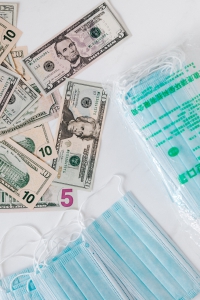U.S. Out-Of-Pocket Healthcare Spending Swells to $491 Billion, Up 10%
By Daniel Granderson

Climbing out-of-pocket healthcare costs forecast through 2026
In 2021, total U.S. out-of-pocket healthcare spending by consumers reached an estimated $491.6 billion, up about 10% from the prior year with continued annual growth of 9.9% expected through 2026. This will result in almost $800 billion of consumer out-of-pocket healthcare spending in 2026, reports leading medical market research publisher Kalorama Information in the recent study Out-of-Pocket Healthcare Expenditures in the United States, 5th Edition.
Multiple drivers are contributing to significant out-of-pocket spending growth, including a variety of demographic, business, and government trends, such as:
- government, regulatory and insurance/payer actions including Managed Care Organization cost shifting, the Affordable Care Act’s Individual Mandate Repeal, and various policy changes that make healthcare more expensive;
- business and economic trends, including actions taken by the business community and healthcare providers;
- demographic trends that affect large groups of people such as obesity, aging and chronic conditions. Less common, yet expensive, demographic trends include mental illness and addiction.
Continuing a long-standing trend, out-of-pocket expenditures for healthcare products and services in the United States represent a significant portion of consumers’ incomes as of 2021. This is the result of a variety of factors including an aging population, rising utilization of medical products and services, and ongoing cutbacks to both public and private health coverage.
Over the years, U.S. consumers’ annual out-of-pocket healthcare costs have risen from about $250 per person in 1980 to $1,650 in 2021, with yearly increases of about $40 to $50. Increases for health plan premiums, in particular, have outpaced increases in overall prices and workers’ earnings. Consumers have noticed this trend and are becoming increasingly concerned with their ability to pay for the costs of illness. And for the lowest wage earners, these healthcare costs have become astronomical.
Greater gains in out-of-pocket spending will be mitigated by continued rising usage of lower cost medications (generic drugs, OTC medicines, Rx-to-OTC switches), growing utilization of disease management programs and the proliferation of low premium, high deductible health plans. Furthermore, salary growth will continue to lag healthcare cost increases and as consumers are unable to afford rising expenditures, they will increasingly forgo treatment and/or search for less expensive options such as generic or OTC medications. The economic effects of the Covid pandemic will further dampen spending, although not significantly.

